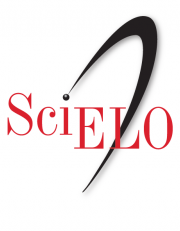Authors
Abstract
Introduction: This study examines plant-based iconography found in ceramic artifacts produced by prehistoric human groups in the Middle Cauca region of Colombia. Objective: The goal is to assign taxonomic and ecosystemic affinities to the morphological features of these ceramic pieces, thereby contributing to a better understanding of the role of plant species in indigenous Quimbaya culture. Methodology: A total of 2,681 ceramic vessels excavated from funerary archaeological contexts were reviewed, of which 137 exhibited distinct vegetal iconographic traits. Results and Discussion: Based on morphological characteristics and ecological context, four plant taxa were proposed: Cucurbita moschata and Lagenaria siceraria (Cucurbitaceae), Crescentia cujete (Bignoniaceae), and Lecytis minor (Lecythidaceae). Conclusion: The study demonstrates that vegetal iconography reveals complex ecological relationships and provides insights into the cultural and material practices of the extinct Quimbaya civilization. These findings enhance our understanding of prehistoric subsistence strategies and symbolic representations.
References
Aguirre-Dugua, X. (2015). Filogeografía y procesos de domesticación de Crescentia alata y Crescentia cujete (Bignoniaceae) en México. Ph.D. Dissertation. Universidad Nacional Autónoma de México.
Aguirre, X., Llanderal, J. González, A. (2018). Anthropogenic dispersion of selected germplasm creates a geographic mosaic of contrasting maternal lineages in Crescentia cujete from Mesoamerica. Tree Genetics & Genomes 14, 18-34- https://doi.org/10.1007/s11295-018-1230-8.
Arguello, P., Sarcina, A., Yoryeth Bastidas, I., Bacca Martínez, A.M., Gutiérrez Torres, J. A., Campuzano Botero, J. (2021). Métodos para la caracterización de la cerámica arqueológica. Editorial UPTC.
Restrepo, L.F. (2007). Tengo los pies en la cabeza. Editorial Los Cuatro Elementos.
Brothwell, D. y Higgs, E. (Eds.). (1980). Ciencia en arqueología (M. Sánchez, Trad.). Fondo de Cultura Económica.
Bruhns, K. (1970). Stylistic affinities between the Quimbaya gold style and a little known ceramic style in the Middle Cauca Valley, Colombia. En: Ñawpa
Pacha, Berkeley, N.os 7-8, pp. 65-84. (Reimpreso en: Cordy-Collins y Stern, Jean [eds.] [1977]. Precolumbian Art History. Alana Peek Publications, Menlo Park, California, pp. 257-276).
Buelvas, L. y Ramírez, J. (2014). Biomecánica de estructuras vegetales: Mejorando la seguridad del ciclismo a partir de la olla de mono. Medellín, Colombia: Universidad Pontificia Bolivariana, Escuela de Arquitectura y Diseño, Facultad de Diseño Industrial.
Camp, W. H. (1954). A possible source for American pre-Columbian gourds. American Journal of Botany, 41, 700-701.
Cayón, D. (2001). “En la búsqueda del orden cósmico: sobre el modelo de manejo ecológico tukano oriental del Vaupés”. Revista Colombiana de Antropología. Instituto Colombiano de Antropología e Historia, 37, 234-267.
Correal, G. y Pinto, M. (1982). Investigaciones arqueológicas en el municipio de Zipacón. Bogotá: Ediciones Fundación de Investigaciones Arqueológicas Nacionales Fian.
Cutler, H. C. y Whitaker, T. W. (1961). History and distribution of the cultivated Cucurbits in the Americas: Whitaker Source. American Antiquity, 26, 469-485.
Dayrat, B. (2005). Towards integrative taxonomy. Biological Journal of the Linnean Society, 85, 407-415.
De la Fuente, B. (2006). ¿Para qué la historia del arte prehispánico? Anales del Instituto de Investigaciones Estéticas 28(89), 7-21. https://www.redalyc.org/pdf/369/36908902.pdf
Dhar, P. P. (2011). A history of Art History: The Indian context. En: P. P. Dhar (ed.), Indian art history. Changing perspectives (p. 1-32). Nueva Delhi: National Museum Institute.
Duque, L. (1970). Los Quimbayas. Reseña Etnohistórica y Arqueológica. Instituto Colombiano de Antropología.
Erickson, D. L., Smith, B. D., Clarke, A. C., Sandweiss, D. H., Tuross, N. (2005). An Asian origin for a 10,000-year-old domesticated plant in the Americas. Proceedings of the National Academy of Sciences, 102, 18315-18320.
Espinal, L. (1981). Apuntes sobre la flora de la región central del departamento del Cauca. Universidad del Valle, Cali.
Gentry, A.H. (1980). Bignoniaceae. Part I. Flora Neotropica Monographs, 25, 82-96.
Giraldo-Cañas, D. (2013). La iconografía vegetal en piedra en el Taj Mahal (Agra, India) y su asignación taxonómica. Revista de la Academia Colombiana de Ciencias Exactas, Físicas y Naturales, 37(143), 189-205. http://www.scielo.org.co/scielo.php?script=sci_arttext&pid=S0370-39082013000200003
Heiser, C.B. (1979). The Gourd Book. University of Oklahoma Press, Norman.
Herbario COL. (1 de enero de 2025). Herbario Nacional Colombiano. https://www.biovirtual.unal.edu.co/es/colecciones/search/plants/
Herrera, L. Moreno, C. y Peña, O. (2011). La historia muy antigua del municipio de Palestina (Caldas). Proyecto de Rescate y Monitoreo Arqueológico del Aeropuerto del Café. En Centro de Museos-Universidad de Caldas, Asociación Aeropuerto del Café (2005-2011).
Herrera, L. Moreno, C. y Peña, O. (2016). Datos de un estudio sobre la ocupación humana en la cordillera Central de Colombia. El Proyecto Arqueológico Aerocafé (Palestina, Caldas). Boletín Museo del Oro, 56, 103-173.
Jaramillo E., L. G. y Salge Ferro, M. (eds.) (2012). Los «teatros» de la memoria: espacios y representaciones del patrimonio cultural en Colombia. Ediciones Uniandes.
Kistler, L. Montenegro, A., Smith, B., Giffordd, J. A., Greene, R. E., Newsom, L. A. y Shapiro, B. (2014). Transoceanic drift and domestication of African bottle gourds in the Americas. Proceedings of the National Academy of Sciences,111, 2937-2941.
Lafont, J. Calle, E. y Durango, L. (2012). Composición química del aceite de almendras producidas por el Árbol Olleto (Lecythis minor DC.). Información tecnológica, 24: 59-68. 10.4067/S0718-07642013000100008.
Lira-Saade, R. (1995). Estudios taxonómicos y ecogeográficos de las Cucurbitaceae latinoamericanas de importancia económica. International Genetic Intitute. Roma, Italia.
Mason, R., Morphet, T., y Prosalendis, S. (2006). Reading Scientific Images: the iconography of evolution. Cape Town, HSRC press.
Medina González, E.I. (1996). Jícaras y guajes prehispánicos procedentes de contextos arqueológicos húmedos. Bachelor Dissertation, Escuela Nacional de Conservación, Restauración y Museografía B Manuel del Castillo Negrete INAH SEP
Morcote-Ríos, G. Bernal, R. y Raz, L. (2016). Phytoliths as a tool for archaeobotanical, palaeobotanical and palaeoecological studies in Amazonian palms. Botanical Journal of the Linnean Society, 182, 348-360. https://onlinelibrary.wiley.com/doi/10.1111/boj.12438?msockid=1140a79d465b6f3638f1b26f47036e20
Moreira, P. A., Aguirre-Dugua, X., Mariac, C. et al. (2017). Diversity oftreegourd (Crescentia cujete) suggests introduction and prehistoric dispersal routes into Amazonia. Frontiers Ecology Evolution, 5, 1-13.
Mori, A. y Prance, G. (1990). Lecythidaceae, Part II. The zygomorphic-flowered New World genera (Couroupita, Corythophora, Bertholletia, Couratari, Eschweilera, & Lecythis). Flora Neotropica Monographs, 21, 1–376.
Mori, S. A., Smith, N. P., Cornejo, X. y Prance, G. T. (2010). The Lecythidaceae Pages (https://sweetgum.nybg.org/lp/index.php). The New York Botanical Garden, Bronx, New York.
Montealegre, J. (2017). Estado del arte de la utilización del totumo (Crescentia cujete L.) como alternativa para la alimentación del ganado bovino. Girardot, Colombia: Universidad Nacional Abierta y a Distancia Escuela de Ciencias Agrícolas, Pecuarias y del Medio Ambiente, Programa de Zootecnia.
Munsterberg, M. (2009). Writing about art. Nueva York: Writing About Art press.
Nee, M. (1990). The domestication of Cucurbita (Cucurbitaceae). Economic Botany, 44, 56-68.
Pang, H. D. (1992). Pre-Columbian art: Investigations and insights. University of Oklahoma Press, Norman.
Pérez Arbeláez, E. (1956). Plantas útiles de Colombia. Camacho Roldan Ltda, Bogotá, Colombia.
Piazzini Suárez, C. E. (2015). Cambio social en la cuenca media del río Cauca, Colombia (3000-400 a. P.): una aproximación desde las iconografías arqueológicas. Boletín de Antropología Universidad de Antioquia, 30, 55-93.
Piperno, D. (1998). Paleoethnobotany in the Neotropics from microfossils: new insights into ancient plant use and agricultural origins in the tropical forest. Journal of World Prehistory, 12(4), 393-449. https://link.springer.com/article/10.1023/A:1022812132194
Piperno, D. y Pearsall, D. (1998). The origins of agriculture in the lowland neotropics. San Diego: Academic Press.
Proulx, D. A. (2006). A sourcebook of Nasca ceramic iconography: reading a culture through its art. Des Moines: University of Iowa Press.
Ramos, J. y Silverstone, P. (2018). Catálogo de la flora relictual del valle geográfico del Rio Cauca. Saint Louis, MO: Prensa del Jardín Botánico de Missouri.
Richardson, J.B.I. (1972). The pre-Columbian distribution of the bottle gourd (Lagenaria siceraria): A re-evaluation. Economic Botany, 26, 265-273.
Ríos, M., Koziol, M.J., Borgtoft Pedersen, H., Granda, G. (eds). (2007). Usefulplants of Ecuador: applications, challenges, and perspectives. Abya-Yala, Quito
Sondereguer, C. (2003). Manual de iconografía precolombina y su análisis morfológico: cronología, estética: Mesoamérica, Centroamérica, Suramérica 1300 aC-1532 dC. Ediciones Geka.
Uribe Villegas, M. A. (2005). Mujeres, calabazos, brillo y tumbaga. Símbolos de vida y transformación en la orfebrería Quimbaya Temprana. Boletín de Antropología Universidad de Antioquia, 19(36), 61-93. https://revistas.udea.edu.co/index.php/boletin/article/view/6916
Whitaker, T.W. y Bird, J.B. (1949). Identification and significance of the Cucurbit materials from Huaca Prieta, Peru. American Museum Novitates, 1426, 1-15.
Whitaker, T.W. y Carter, G.F. (1954). Oceanic drift of gourds-Experimental observations. American Journal of Botany, 41, 697-700.
Whitaker, T. W. Cutler, H. C. y Macneish, R. S. (1957). Cucurbit materials from three caves near Ocampo, Tamaulipas. American Antiquity, 22, 352-8.


 PDF (Español)
PDF (Español)
 FLIP
FLIP
 HTML (Español (España))
HTML (Español (España))




























